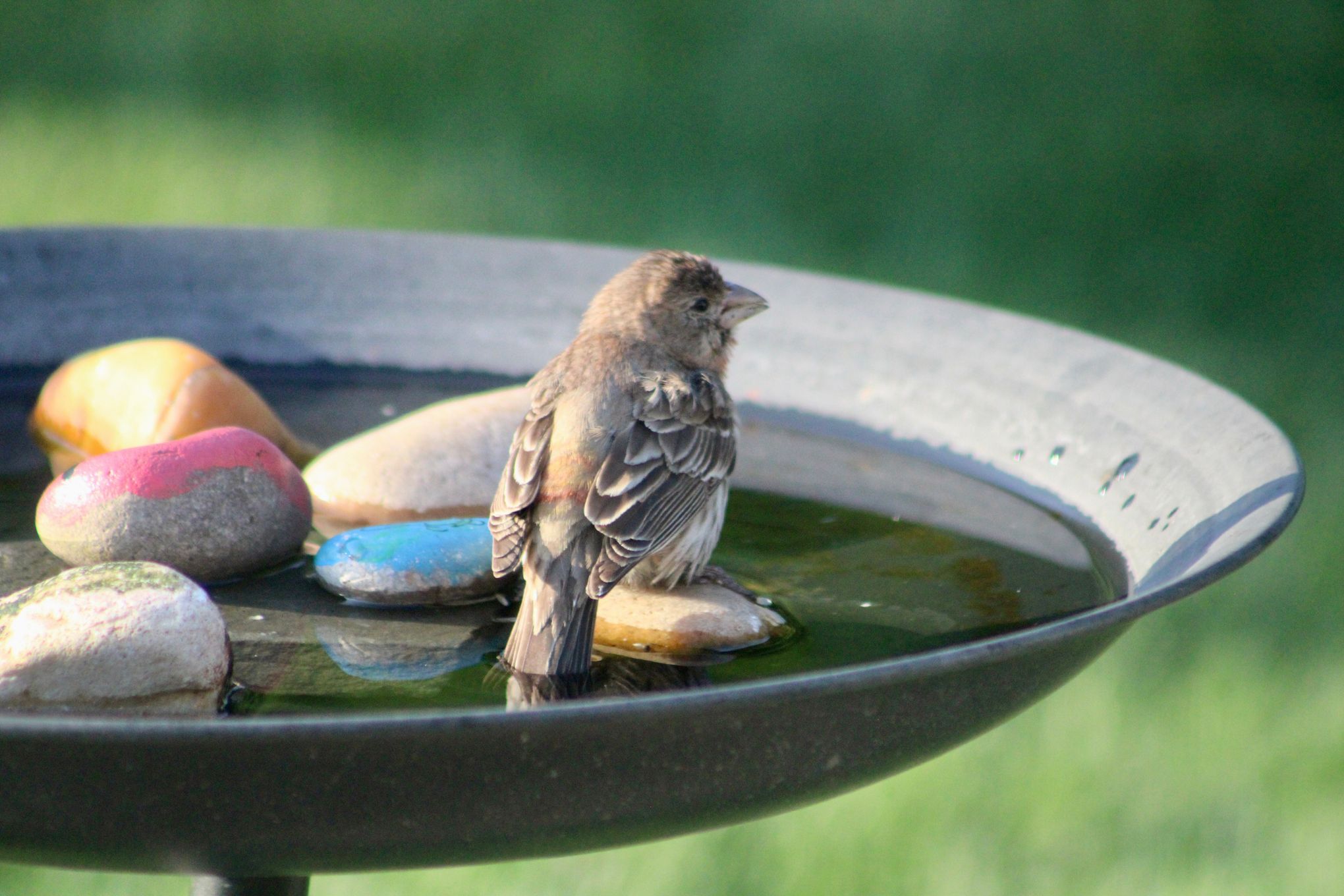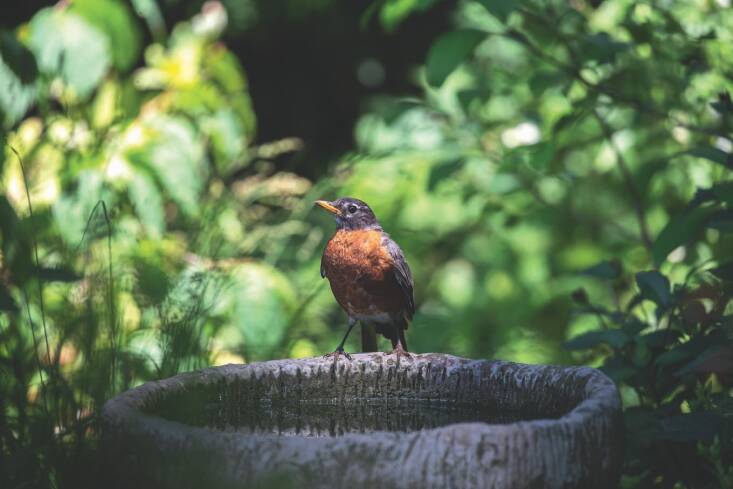Have you ever wondered if birds can drown in your bird bath? It’s a question that might surprise you, especially if you love watching these feathered visitors splash and play.
You want to keep your outdoor space safe and inviting for birds, but what if something as simple as water could put them at risk? You’ll discover the truth about birds and bird baths, learn how to make your setup safer, and ensure your feathered friends enjoy every drop without danger.
Keep reading—you’ll be glad you did!

Credit: www.reddit.com
Bird Baths And Bird Safety
Bird baths provide water for birds to drink and bathe. They help birds stay clean and cool.
It is important to keep bird baths safe. Birds can face dangers if the bath is not set up well.
How Bird Baths Work
Bird baths hold shallow water for birds to splash and drink. The water should be clean and fresh.
Birds use the bath to clean their feathers. This helps them stay healthy and fly better.
- Shallow water is safer for birds
- Place baths in quiet, safe areas
- Regularly change water to avoid germs
Common Risks For Birds
Birds can drown if water is too deep or slippery. They may struggle to get out if sides are steep.
Dirty water can spread diseases. Predators may also hide near bird baths, posing a threat.
- Deep water increases drowning risk
- Slippery edges make it hard to escape
- Dirty water causes illness
- Keep baths away from places where cats or other predators hide
Can Birds Drown In Bird Baths?
Bird baths provide water for birds to drink and bathe. They are popular in gardens and parks. Many people wonder if birds can drown in them.
Yes, birds can drown in bird baths under certain conditions. It depends on the bath’s design and the bird’s behavior.
Factors Increasing Drowning Risk
Several factors can make drowning more likely in bird baths. These relate to the bath’s shape, water depth, and cleanliness.
- Deep water that is hard for small birds to stand in
- Slick or steep edges that birds cannot grip
- Dirty water that hides dangers or causes birds to struggle
- Strong wind or rain making birds slip or fall
- Predators startling birds into the water
Bird Species Vulnerability
Not all bird species face the same drowning risk. Some birds are more vulnerable due to their size and habits.
| Bird Species | Vulnerability Level | Reason |
| Small songbirds | High | Small size and weak swimming ability |
| Doves and pigeons | Medium | Moderate size, cautious bathers |
| Waterfowl (ducks, geese) | Low | Strong swimmers and larger size |
| Woodpeckers | Medium | Cling to edges, but can slip |
| Raptors | Low | Rarely use bird baths, strong flyers |
Safe Bird Bath Designs
Bird baths are great for helping birds stay cool and hydrated. But some designs can be risky. Birds can drown if the water is too deep or if they slip. It is important to choose safe bird bath designs.
Good bird baths keep birds safe while they drink and bathe. You can help by picking the right size, surface, and place for your bird bath.
Ideal Depth And Size
The depth of the bird bath should be shallow. Water that is too deep can cause birds to drown. A depth of 1 to 2 inches is best for most birds.
The size of the bath should allow birds to perch safely. A wide basin gives birds enough space to move around without falling in.
- Water depth: 1 to 2 inches
- Bath diameter: at least 12 inches wide
- Gradual slope from edge to center
Non-slip Surfaces
Birds need stable footing to avoid slipping. Choose bird baths with rough or textured surfaces. This helps birds grip the surface better.
If the bird bath is smooth, add stones or pebbles inside. These create a safe place for birds to land and stand.
- Use rough or textured basins
- Add small stones or pebbles inside
- Keep surfaces clean to avoid algae
Placement Tips
Place the bird bath where birds feel safe. Avoid open areas where cats or other predators can hide. A quiet spot near bushes or trees is best.
Make sure the bird bath is stable and will not tip over easily. Check it often and keep the water fresh and clean.
- Place near shrubs or trees for cover
- Keep away from predator hiding spots
- Use a sturdy base to prevent tipping
- Change water regularly to stay fresh

Credit: www.seattletimes.com
Maintaining A Safe Bird Bath
Bird baths give birds a place to drink and cool off. It is important to keep them safe.
Birds can drown if the water is too deep or dirty. You can help by keeping the bath clean and shallow.
Regular Cleaning
Clean the bird bath often to stop germs and algae from growing. Dirty water can harm birds.
Use a brush and mild soap to scrub the bath. Rinse well so no soap stays behind.
- Clean at least once a week
- Remove leaves and dirt daily
- Use water safe for birds
Water Level Monitoring
Keep the water level shallow. Deep water can be dangerous for small birds.
Check the water often. Fill the bath only about 1 to 2 inches deep.
- Shallow water helps birds stand safely
- Change water daily to keep it fresh
- Remove standing water if it rains a lot
Seasonal Adjustments
Adjust the bird bath based on the season. Cold weather and heat need different care.
In winter, use a heater to keep water from freezing. In summer, check water more often to keep it cool.
- Use a bird bath heater in winter
- Place bath in shade during summer
- Empty and clean before freezing weather
Additional Safety Tips
Bird baths provide water for birds to drink and cool off. Safety is important to keep birds healthy and safe.
These tips help prevent accidents and protect birds from harm around your bird bath.
Providing Escape Routes
Birds need easy ways to leave the bird bath if they feel threatened. Shallow edges and nearby perches help them escape quickly.
- Use a bird bath with gradual slopes for easy climbing out.
- Place branches or sticks near the bath for birds to land on.
- Keep the area clear of obstacles that block quick exits.
Using Bird Bath Accessories
Accessories can make bird baths safer and more comfortable. Floating platforms and small fountains attract birds and keep water fresh.
| Accessory | Purpose |
| Floating platform | Helps birds rest safely on water |
| Small fountain | Keeps water moving and clean |
| Drain plug | Makes cleaning easier to prevent germs |
Avoiding Predators
Bird baths can attract predators like cats or hawks. Protect birds by placing baths in safe spots and keeping watch.
- Set up bird baths away from dense shrubs where predators hide.
- Keep the area open so birds can see danger coming.
- Move baths closer to trees or bushes for quick cover.
- Check the area regularly for signs of predators.

Credit: www.telegraph.co.uk
Frequently Asked Questions
Can Birds Drown In A Bird Bath?
Yes, birds can drown in a bird bath if the water is too deep or if they become trapped. Shallow water and regular cleaning reduce this risk.
How Deep Should Water Be In A Bird Bath?
Water should be no deeper than 1 to 2 inches. This depth is safe and comfortable for most birds to bathe without drowning risk.
What Causes Birds To Drown In Bird Baths?
Drowning often happens due to deep water, slippery surfaces, or exhaustion. Birds may struggle if they can’t find an easy way out.
How To Make Bird Baths Safer For Birds?
Use shallow water, add stones or pebbles for footing, and clean regularly. These steps help prevent drowning and attract more birds safely.
Conclusion
Birds can face risks in bird baths, but solutions exist. Ensure water depth is shallow. Add stones or branches for easy exits. Regular cleaning prevents hazards. Supervise during initial visits to help them adjust. A safe bird bath attracts more feathered friends.
They enjoy splashing and drinking in a secure space. Your effort creates a welcoming environment. Watch as they thrive in your garden. A little care goes a long way. Happy bird watching!

